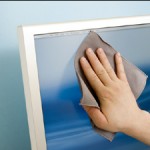If your family is like mine, your inventory of home-based electronic devices is growing. This acceleration requires regular cleaning, especially your PC. Only three decades ago, computers were medium-sized tractor trailer samples. Trained engineers protected the delicate hardware in dust-free, environmentally controlled rooms. Contemporary personal computers, some as small as three-ring binders, sit on our kitchen counters, desks and bedroom family card tables. Family members, including pets, touch keys and drag the mouse around. The computer collects dust, cracker crumbs, and Popsicle drips. Over time, accumulated dirt problems.
You can change the maintenance and cleaning problems in setting up your PC in a friendly place. To protect your PC, keep it in a corner protected from direct sunlight and long periods of fresh air. Place it on a solid surface with good air flow behind the back of the CPU.
You need a few household supplies: q-tips, soft cloth and detergent. The only specialist materials you need are canned air and inexpensive kits for cleaning the drive heads. PC cleaned not long and not worry, you will not damage anything following these instructions. Most PCs have several parts so that they one by one. Before you begin, turn off the power to your computer.
 How to clean computer screen/monitor ?
How to clean computer screen/monitor ?
The monitor, like your television screen attracts dust and sticky fingerprints. You can take the anti-static wipes that double as screen cleaners. If you have a shock when you touch the screen, static is a problem on your workstation. Consider placing a plastic mat under the seat to reduce static build-up. I have noticed that the paper towels work as screen cleaners. Avoid spraying liquid at your monitor. Moisten the cloth and wipe the screen once a week.
Keyboard Cleaning
Regular cleaning keeps your keyboard looking new. Use a soft cloth, such as a cotton diaper, moistened with a mild soap solution to wipe out the keys. While you perform the cloth on the plastic casing around the monitor and CPU. Sure to lift the keyboard and substance under the surface. Turn the keyboard upside down to shake out crumbs or use a damp q-tip to remove them.
Avoid allowing water to seep between keys. Keyboards do not like to get soaked. Accidents can happen and I can personally guarantee that if you spill a glass of water on your keyboard, all is not lost. Set the keyboard upside down on a towel. Let it dry overnight and it must be good. If the keyboard does not respond well after an incident off time, call a professional.
Mouse Cleaning
The mouse cursor on the screen as you slide the pointing device on a padded surface. When you notice that the mouse cursor does not respond quickly, it’s time for a cleaning. Most mice have a small cover that protects the ball hidden in the cabinet. Remove the cover by rotating, shaking the cracker crumbs, and wipe the ball clean. You must also blow into the ball cage or spray cans feed air into the opening. Replace the ball and set the mouse. Clean the mouse about once a month, especially if your kids are like mine and eat near the PC.
External Drives Cleaning
Your computer, especially older models, may also be external drives. Floppy, tape, and CD-ROM drives all gathering dust. The read-write head in each station scans the hard disk or tape as it reads and writes data. A dusty head can scratch the disc or tape and cause maintenance problems. Regular cleaning is a must.
Several commercially available products can help you clean drive heads. These cheap products, generally less than $ 10.00, you need to insert in the drive, a disk or cartridge moistened with cleaning fluid. Follow the instructions of the manufacturer to change the read / write head access to scan the surface. If you are lucky a drive with a yellow caution light you know that it is time to clean when the light comes. Otherwise try to clean your drives once a Monday
Central Processing Unit-CPU
The CPU is in the metal case containing the computer parts you do not see. The motherboard, modem, network cards and live in slots at the bottom of the metal box. A high-speed fan inside the box prevents overheating and shuttles data around, after the commands. Help the fan does its job and minimize dust accumulation by ensuring that clear air space behind your CPU.
One or two times per year, or when you upgrade the memory, remove the screws from the back of the CPU and slide the lid of the box. Tape the screws to the cover, while you work. The screws are small and easy to misplace. Target a look of compressed air to an open area and spray the dust from the components. You will not hurt your computer to do so. When you’re done, slide the cover back on. It may be a tight fit. Especially for the screws back into place.
Your computer is now clean. The cost of PCs is significantly decreased in the last ten years, but the chances are that you are looking at the same monitor, keyboard and housing for a while. Spend a few minutes the care of your computer every week. You will be pleased with the results and save money!